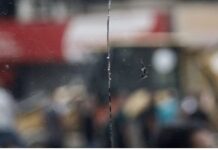Julian Borger
The Guardian / September 14, 2024
Motivated pursuers using advanced technology and brute force have yet to pin down their cautious quarry. Would his death or capture stop the war ?
Jerusalem – A group of Israeli hostages were huddled in a tunnel in Gaza a few days after they had been dragged from their homes on 7 October, when the man who had plotted their abduction appeared out of the subterranean gloom.
His hair and beard were grey and his dark-ringed eyes stared out from under thick black brows. It was a face familiar to them from a thousand broadcasts and newspaper stories: Yahya Sinwar. The Hamas leader in Gaza was the most feared man in Israel, even before he ordered the October raid in which 1,200 people – two-thirds of them civilians – were killed and 250 taken hostage.
In fluent Hebrew, perfected over more than 22 years in an Israeli prison, Sinwar reassured them that they were safe and would soon be exchanged for Palestinian prisoners. One of the hostages, Yocheved Lifshitz, an 85-year-old veteran peace campaigner from the Nir Oz kibbutz, had no time for his show of concern for their welfare and challenged the Hamas leader to his face.
“I asked him how he wasn’t ashamed to do something like this to people who had supported peace all these years?” Lifshitz told the Davar newspaper after her release following 16 days in captivity. “He didn’t answer. He was quiet.”
A video recorded on Hamas security cameras at about the same time, on 10 October, and found by the Israeli military some months later, shows Sinwar following his wife and three children through a narrow tunnel and disappearing into the murk.
That was the last sighting of the man who unleashed the Gaza war. According to Gaza health officials, 41,000 Palestinians, mostly civilians, have been killed in a devastating Israeli response that has flattened much of the territory, driving 90% of the population from their homes and bringing 2.3 million people to the edge of famine. Through all this, the prime target of the Israeli bombardment has remained at large and apparently unscathed.
The nearly year-long hunt for Sinwar has involved a mix of advanced technology and brute force, as his pursuers have shown themselves prepared to go to any lengths, including causing extremely high civilian casualties, to kill the Hamas leader and destroy the tight circle around him.
The hunters are a taskforce of intelligence officers, special operation units from the Israel Defense Forces (IDF), military engineers and surveillance experts under the umbrella of the Israeli Security Agency, more widely known by its Hebrew initials or the acronym Shabak.
Personally and institutionally, this team is seeking redemption for the security failures that allowed the 7 October assault to happen. But despite their motivation, they have so far failed to pin down their quarry.
“If you’d told me when the war began that more than 11 months later he would still be alive, I would have found it amazing,” said Michael Milshtein, a former head of the Palestinian affairs section in Israeli Military Intelligence (Aman). “But remember, Sinwar prepared for a decade for this offensive and IDF intelligence was very surprised by the size and length of the tunnels under Gaza and how sophisticated they were.”
The IDF estimates there are 500km (300 miles) of tunnels under Gaza, an entire underground city. A second important challenge, according to at least some in the defence establishment, is that Sinwar is likely to have surrounded himself with human shields.
Ram Ben-Barak, a former deputy director of the Mossad, said: “Because of the hostages, we are very careful with what we are doing. I believe if there were no such restrictions, we would have found him easier.”
Whether or not Sinwar has a ring of human shields around him, the potential presence of hostages has not prevented the IDF from dropping hugely powerful 2,000lb (900kg) bombs on suspected Hamas hideouts in recent weeks. Out of its two primary war aims, the Netanyahu government puts the destruction of Hamas above the rescue of the hostages.
There is no shortage of expertise among Sinwar’s hunters. Targeted killings have been a core tactic of Israel’s military since the founding of the state. Since the second world war, Israel has assassinated more people than any other country in the western world.
Yahalom, a special section within the Combat Engineering Corps, has more experience in tunnel warfare than any of its counterparts in western armies, and has access to state-of-the-art US-made ground-penetrating radar. The clandestine signals intelligence unit 8200 is a global leader in electronic warfare and has been eavesdropping on Hamas communications for decades.
The Shin Bet lost many of its sources in Gaza after Israel pulled out of the territory in 2005, but worked hard to rebuild its network of informants after Israel launched its ground invasion last October, recruiting from among the desperate flows of Palestinians fleeing the onslaught.
Despite the capabilities of this formidable taskforce, it has come close to catching Sinwar just once, in a bunker beneath his home town of Khan Younis in late January. The fugitive warlord had left behind clothing and more than 1m shekels (over £200,000) in wads of banknotes. This was seen by some as a sign of panic, though the Hamas leader was ultimately estimated to have left a few days before Israeli forces raided the bunker.
The assumption made by Sinwar’s trackers is that he has long since abandoned using electronic communication, well aware of the skills and technology possessed by his pursuers. It was not only Hebrew that Sinwar studied in Israeli jail but also the habits and culture of his enemy.
“He really understands the basic instincts and the deepest feelings of Israeli society,” said Milshtein, now at the Moshe Dayan Center at Tel Aviv University. “I’m quite sure every move he makes is based on his understanding of Israel.”
Sinwar still communicates with the outside world, albeit with apparent difficulty. The long negotiations over a ceasefire in Cairo and Doha have often been paused while messages are sent to and from the subterranean commander. One strong possibility is that Sinwar uses couriers to remain in command, drawn from a small and shrinking coterie of aides he trusts, starting with his brother Mohammed, a senior military commander in Gaza.
It is the hope of the team hunting Sinwar that the need for contact with couriers, to issue orders and control the hostage negotiations, will ultimately prove his undoing, just as a courier led American trackers over several years to Osama bin Laden’s hideout in Abbottabad, Pakistan.
It is believed that it was a courier who led the Israeli hunters to their biggest scalp of the war so far. At 10.30am on 13 July, Mohammed Deif, Hamas’s veteran commander who had topped Israel’s most wanted list since 1995, emerged from a hiding place near a camp for displaced people at al-Mawasi to take in some air with a close lieutenant, Rafa’a Salameh. Within an instant, both men were killed by bombs dropped by Israeli jet fighters – at least, according to IDF accounts – along with scores of Palestinians. Hamas insists Deif is still alive but he has not been seen since.
Many in the Israeli security establishment rued what they saw as a missed historic opportunity in September 2003 when they had planes ready to bomb a house where the entire Hamas leadership was holding a meeting. After furious argument in the military chain of command, the air force used a precision missile fired into the presumed meeting room, rather than flattening the whole building with a hail of bombs, out of concern for civilian casualties. They picked the wrong room and the Hamas leaders survived.
By July this year, the likelihood of killing large numbers of civilians was no longer an obstacle. In targeting Deif, the air force used 2,000lb bombs, the very weapons the Biden administration had stopped sending in May because of their indiscriminate destructive force. Israel reportedly dropped eight of them on 13 July. Ninety Palestinians in the vicinity were killed and nearly 300 injured.
“It seems that the main source for the attack on Mohammed Deif, that actually gave the information about his location, was a human source – one of these messengers that go from one tunnel or shelter to another and bring messages between one commander to another,” Milshtein said. “So maybe there will be an opportunity to follow one of these messengers [to Sinwar], or if one of them is an agent of Israel’s Shin Bet.”
Yossi Melman, a co-author of Spies Against Armageddon and author of other books on Israeli intelligence, said Deif may have made a mistake that Sinwar was unlikely to repeat.
“Deif was maybe more arrogant or maybe he told himself they tried to kill me so many times, and I lost an eye and an arm but I still survived, so maybe God is with me,” Melman said. “The Shabak and the army were waiting just for this opportunity. All these targeted killings are about waiting for the one minor mistake by the other side. But Sinwar is more cautious. He is not a military commander who has show himself to be among his people.”
On Tuesday this week, the air force again dropped 2,000lb bombs on al-Mawasi, designated by Israel as a “humanitarian zone”. At least 19 people were killed and 60 injured. The IDF said it had carried out “precision strikes” on Hamas targets, but did not specify the target.
It is possible that a deal will be made in which Sinwar goes into exile, and some suggest he may already be across the border, hiding in a tunnel on the Egyptian side of the Rafah border. That would cut against the conventional wisdom about the ideological zeal of a man who rose through Hamas ranks as the executioner of suspected informers.
“My personal assessment is that the likelihood of this option is very low,” said Milshtein, whose job in the Aman military intelligence service was to study Sinwar and other Hamas leaders. “It is in his basic DNA to stay in Gaza and to fight until death. He will prefer to die in his bunker.”
Ben-Barak, the former MOSSAD deputy chief, agreed. “I don’t think he will cross into Egypt, because the moment that people know he is not in Gaza, the whole [Hamas] operation will collapse – its morale and so on. That’s why I don’t think he would do that. He’s not a coward.”
Sinwar’s death or capture would undoubtedly be hailed as a major military success by Benjamin Netanyahu’s government, which has made the destruction of Hamas’s “military and governing capabilities” a primary war aim. Whether it would stop the war is quite another question.
“When we catch him, the situation will be much better, maybe for a couple of weeks,” Ben-Barak said. “After that, someone else will come. It is an ideological war, not a war about Sinwar.”
Milshtein said: “After almost 50 years of assassinations, we understand this is a basic part of the game. Sometimes it is necessary to assassinate a very prominent leader. But when you start to think it will be a gamechanger and that an ideological organisation will collapse because you kill one of its leaders, that is a total mistake.
“I’m quite sure that someone will replace, or actually has already replaced, Mohammed Deif, and if Sinwar is killed there will be someone else … You cannot create a fantasy. It will not end the war.”
Julian Borger is The Guardian’s world affairs editor based in Washington












